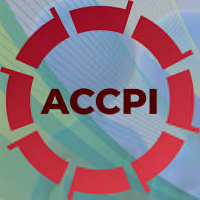Integrative Psychotherapy
Prepared by the International Academy of Mental Health and Integrative Psychotherapy and protected by copyright. It is not allowed to use the article in any form, including publishing a copy, without the appropriate permission issued by the organization.
What is Integrative Psychotherapy?
Integrative psychotherapy is a valid psychotherapy modality recognized by the European Association for Psychotherapy (EAP), the World Council of Psychotherapy (WCP), the European Association for Integrative Psychotherapy (EAIP), the American Psychological Association and other authoritative international professional societies.
ინტეგრირებული მიდგომა ითვალისწინებს სხვადასხვა ფსიქოთერაპიული სკოლების ელემენტებზე (კონცეფციები, ტექნიკები) დაყრდნობით ახალი დამოუკიდებელი თერაპიული მოდელის შექმნას. ის ასევე გულისხმობს, პიროვნების გამთლიანების ფსიქოთერაპიულ პროცესს, რომელიც მიმდინარეობს ემოციური/აფექტური, კოგნიტური, ქცევითი და ფიზიოლოგიური სფეროების გამთლიანებით. ბოლო წლების კვლევების თანახმად, ფსიქოთერაპია ვითარდება სხვადასხვა სკოლების, ფსიქოთერაპიული მოდალობების ინტეგრირების მიმართულებით. პრაქტიკოსების უმრავლესობა აღნიშნავს, რომ მუშაობის პროცესში ეყრდნობა რამდენიმე სკოლის თეორიულ და ტექინიკურ შემადგენლებს კლიენტის ცხოვრებასა და მდგომარეობაში სასურველი ცვლილებების მისაღწევად.
The advantages of integrative psychotherapy are:
1. Integrative psychotherapy techniques can be used in all formats – individual and group therapy, child, adolescent, adult, couple and family therapy.
2. The list of psychological difficulties with which this form of therapy works is unlimited - starting with complaints of a personal nature, ending with any form of mental disorder.
3. During integrated therapy, the client is actively involved in the process,
Unlike other classical approaches, and cooperates with the therapist. His individual characteristics, values, credentials and degree of motivation are fully taken into account.
4. The therapist is flexible and can use techniques of different schools at different stages of therapy, taking into account the client's interests and situation, which increases effectiveness.
5. The specialist does not have to treat the client and himself within the framework of one specific approach, he has the opportunity to take into account the individual characteristics of the client and to solve each specific therapeutic task, to use the tools of different modalities at his disposal as necessary and expedient.
6. An integrative approach allows the therapist to work in accordance with his own personality, therapeutic style and human challenges, in accordance with the given theoretical conceptualization of psychotherapeutic tasks. Therefore, it is very free, flexible and efficient with a mindset of achieving results. According to Norcross (2005b), “Integration in psychotherapy is characterized by a willingness to cross the boundaries of other schools of thought to discover what can be learned from other models of psychotherapy practice. The ultimate goal of such actions is to increase the effectiveness and usability of psychotherapy."
An integrative approach to psychotherapy as an intermodal dialogue
The characteristic of integrated psychotherapy is not to be limited to only one approach and to expand the theoretical boundaries, to find out what can be shared from other currents of the psychotherapeutic process. This approach to therapy is characterized by an open, continuous relationship between therapeutic modalities. Integrative therapy adheres to the idea that the process of consciousness growth in psychodynamic therapy, the process of behavior formation in behavioral psychotherapy and a number of other circumstances together form the healing factors of psychotherapy. In order to arrive at such a comprehensive integrated approach to treatment, intermodal dialogue is necessary.
The history of psychotherapy was shaped by the parallel development of the theoretical foundations of different modalities. The followers of each psychotherapeutic school (modality) have access to the knowledge and achievements that this or that current has developed and developed. A clear sign of integrated psychotherapy is to focus on the development of the field of psychotherapy as a whole, which is possible by honing professional knowledge formed in this or that course.
Integrative psychotherapy has its roots in the 1930s. Since the 1980s, significant progress has been made, largely thanks to the formation of the Society for Research on Integrative Psychotherapy (SEPI). SEPI was established in 1983 as a way to connect people interested in this treatment approach. It is awareness ready for dialogue, where professionals listen and learn even today, that is the strength of this approach.
The long history of psychotherapy integration includes a long period of self-reflection. The integrated approach crossed the theoretical boundaries and included various professional groups in addition to psychotherapists: psychologists, psychiatrists, social workers. Dryden (UK) in 1980 addressed the differences in therapeutic style between theoretical orientations. Bastin (Germany) in 1980 discussed methods of integrating therapists, as well as theoretical and practical advantages. Greenberg and Safran (Canada, 1987) published Emotion in Psychotherapy in English, and Lecomte and Castonge in French, Rapprochement and Integration in Psychotherapy. Guidano (Italy) in 1987, - "Peculiarities of Selfie". Among the many books published in the United States are the Handbooks of Integrative Psychotherapy by Norcross and Goldfried (1992) and Stricker and Gold (1993).
In a 1996 review of psychotherapy research conducted by the UK Department of Health's National Health Service, Roth and Fonegy concluded that one of the most promising directions for future research is that which seeks to integrate modalities.
There is a growing consensus that an integrated approach to therapy is the future of psychotherapy.
Three steps of integration - creation of a new conceptual model
When considering the criterion of scientific validity of integrative psychotherapy, the question arises as to how a new conceptual construction is developed, whether or not a separate, identifiable and qualitatively new object of study is formed at this time.
A distinctive feature of integrative psychotherapy is the exploration of how the previously unattainable can be used for the client's benefit, meaning common factors derived from different thought constructs. Such common factors can be found among therapeutic courses. They represent a strong point, because from a different theoretical starting point it was possible to arrive at a common result.
Integrative psychotherapy recognizes technical eclecticism, which means that depending on the specifics of a particular case, different interventions from different orientations can be used. Then integration is achieved at the theoretical level.
Thus:
- The first step of integration is the identification of common factors that lead to a common outcome.
- The second step is to adapt the intervention using technical eclecticism.
- The third and last step is to achieve integration at the theoretical level.
It should be noted that these three approaches to the study of psychotherapy integration are not mutually exclusive, on the contrary, they are closely related. For example, by identifying common factors, we learn what the theoretical models have in common and distinguish them, as a result, we highlight areas where more detailed empirical and clinical investigation is needed. In a more in-depth clinical and research analysis, we begin to refine the parameters of these basic principles. This is the technical eclecticism of the orientation, at this stage we determine which will be more effective in this or that clinical situation. Once we have established the effectiveness of several techniques, it is possible to move on to a bottom-up approach to theory building.
Theoretical constructs associated with a particular school may shape specific interventions characteristic of it. The technical eclecticism of effective methods may require a regrouping of what we consider to be effective at the appropriate level, and thus form a new conceptual model, taking into account the form of theoretical integration.






